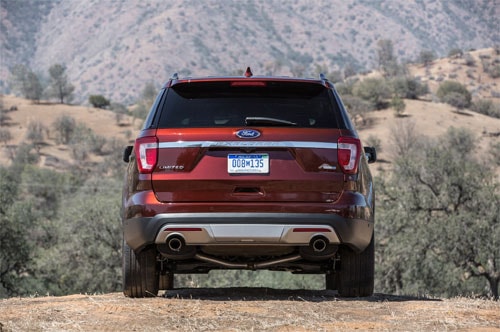Ford caught in scandal over hiding exhaust information from Explorer cabin
Both the government and the US National Highway Traffic Safety Administration (NHTSA) have investigated the Explorer's potential emissions leaks.
The US government launched an investigation into the Ford Explorer in 2016, but News 4 discovered that complaints against Ford and the government had been filed for several years before the investigation was announced. The question is, when did the US automaker know about the potential safety defect?
 |
Ford is facing the risk of losing customer trust due to suspicions of hiding information about technical errors on Explorer. |
In July 2016, NHTSA launched an investigation into possible carbon monoxide (CO) leaks in Explorers from the 2011 to 2015 model years. A year later, the agency escalated the investigation to what it calls an “engineering analysis,” and now includes Explorers from the 2011 to 2017 model years.
Many safety experts and consumer advocates want to know when Ford first received a complaint.
“There are some things about this that really bother me,” said David Friedman, who once headed NHTSA and now works with Consumers Union, which publishes the prestigious Consumer Reports magazine.
Friedman said that not only had Ford known about the potential for exhaust or carbon monoxide leaks for several years, but the company had also sent out Technical Service Bulletins (TSBs) to dealers.
“That shows they knew something was wrong,” Friedman said.
Meanwhile, a News 4 investigation found repair manuals from 2012, 2014 and 2016, including one from 2012 about exhaust odors in Explorers from 2011 through 2013. The manual tells mechanics how to fix the leak.
Other manual bulletins from 2014 and covering the 2014 and 2015 model years also mentioned exhaust odors entering the vehicle when the auxiliary air conditioning control system was used.
NHTSA also received complaints about the Explorer. One from June 2011 said the "cabin filled with exhaust smoke." Another from March of that year said "my wife had trouble concentrating on driving several times."
In total, there were more than 2,700 complaints over six years, including three accident reports and 41 injuries.
Many Explorer owners, like Susan Stazetski of White Plains, Maryland, have even filed lawsuits against Ford, claiming the vehicles made them sick.
“I still wake up with a migraine every day,” Stazetski said.
Stazetski's lawyer, Jacqueline Herritt, said cases like this could be tried under "lemon law."
"It's clearly within the law. If someone is driving and they inhale CO, pass out, get a migraine, or all of these things happen to them, it's a serious safety issue," Herritt said.
"Safety is our top priority," Ford said in a statement. "We take this issue seriously. Ford engineers have been working with police and customers across the country to address concerns. We are also in Washington, DC, to inspect vehicles.
According to NHTSA, there is no actual data or evidence collected to support claims of any injuries or accidents resulting from carbon monoxide poisoning. We encourage any driver with concerns to contact their Ford dealer or call the hotline."
NHTSA does not comment on opening investigations.
NHTSA's initial investigation found no evidence of such complaints, but the agency has said that "carbon monoxide levels may increase in certain driving situations."
"If it is determined to be a safety defect, Ford will be the target of significant fines from NHTSA for failing to address the problem, even though it was well known," Friedman said.
Several police departments across the US, including Montgomery County, Maryland, have parked Explorers after officers reported falling ill due to carbon monoxide entering the vehicle's cabin.
According to VNE
| RELATED NEWS |
|---|

